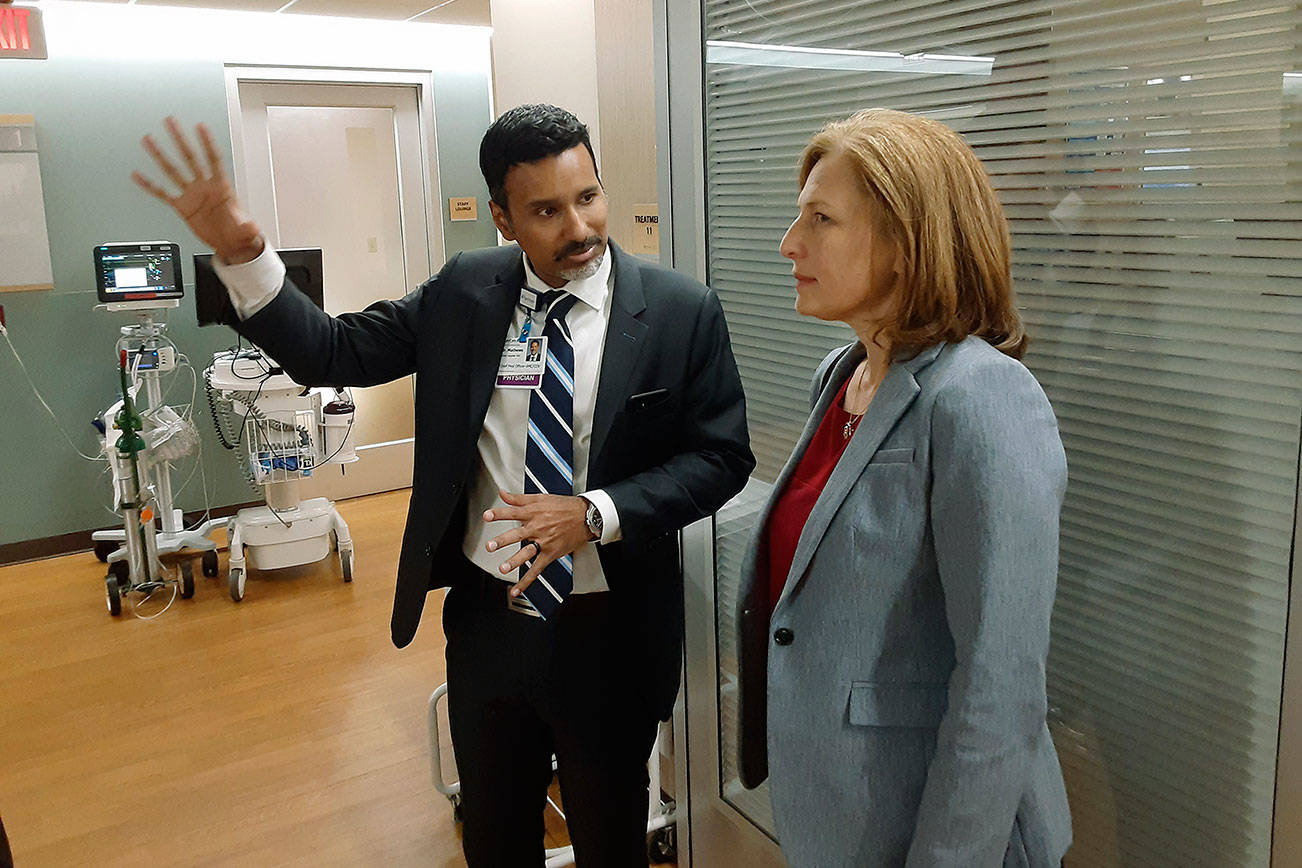At the head of U.S .Eighth Congressional District Congresswoman Kim Schrier’s brief tour of the MultiCare Auburn Medical Center on Monday afternoon, the hospital’s chief medical officer. Dr. Arun Mathews, described to her some of the center’s brightest, sparkliest, and most up-to-date bits.
And the positive effect that numerous remodelings and updates over the years have wrought on the hospital’s general vibe and morale.
Schrier is in the area for a welcome respite from her duties in Washington, D.C.
“We went from 28 beds to 30, which is just a few more beds,” said Mathews bringing to tour to a halt in one wing, noting, however, that the transformation of the space altered the old silo mentality to one of doctor and nurses and staff sharing information and space.
“That changed everything,” Mathews said.
As the tour progressed, faces looked up from work stations and smiled.
“We didn’t know you were coming! Hi!,” said one technician.
“I know you!” said another.
At an elevator, Schrier met Dr. Sidney Beers on his rounds.
“We went from something that was really awful to something that is really awesome. But as the population grows, it’s almost too small already,” Beers said of the hospital. “It seems like every year we come to a time where we are busting at the seams. Having a larger front door means we are able to better assess and triage patients, but unless we are able to grow on the back end, it’s a constant tension.
“Opening of a new hospital in Covington is certainly helping ease the pressure, but we’re always trying to figure out the needs for the community of Auburn,” Beers added.
At word of the last stop, the birthing wing, Schrier’s face lit up, and darned if she didn’t pick up a mille-spring or two in her step. After all, the Issaquah pediatrician knows a thing or 10,000 things about kids.
Nursing Supervisor Jody Walker led Schrier along corridors shut in by walls decked with pictures of infants. Turns out, those are the babies of hospital staff. Walker tilted her head.
“They just installed that lighting,” she said, indicating the ceiling of one of the birthing rooms. “It really helps.”
Schrier appreciated the generous space provided in the private birthing rooms, necessary, Walker explained, to accommodate the teams needed to facilitate the entry of new human beings into the world.
“This is great,” Schrier said.



